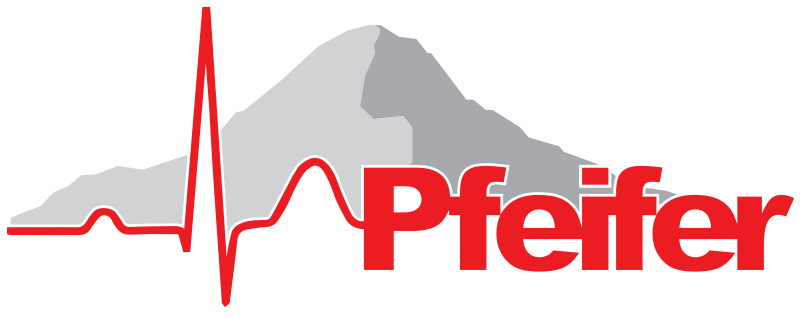CIBC Software
Acknowledgments
The software and data sets provided on this web site are Open Source software projects that are principally funded through the SCI Institute's NIH/NIGMS CIBC. For us to secure the funding that allows us to continue providing this software, we must have evidence of its utility. Thus we ask users of our software and data to acknowledge us in their publications and inform us of these publications. Please use the following acknowledgment and send us references to any publications, presentations, or successful funding applications that make use of the NIH/NIGMS CIBC software or data sets we provide.Please acknowledge the use of CIBC software.
"This project was supported by the National Institute of General Medical Sciences of the National Institutes of Health under grant numbers P41 GM103545 and R24 GM136986.”
Software
 |
SCIRun is a Problem Solving Environment (PSE), for modeling, simulation and visualization of scientific problems. SCIRun now includes the biomedical components formally released as BioPSE, as well as BioMesh3D. |
 |
Seg3D is a free volume segmentation and processing tool developed by the NIH Center for Integrative Biomedical Computing at the University of Utah Scientific Computing and Imaging (SCI) Institute. Seg3D combines a flexible manual segmentation interface with powerful higher-dimensional image processing and segmentation algorithms from the Insight Toolkit. Users can explore and label image volumes using volume rendering and orthogonal slice view windows. |
 |
ShapeWorks is an open-source distribution of a new method for constructing compact statistical point-based models of ensembles of similar shapes that does not rely on any specific surface parameterization. The method requires very little preprocessing or parameter tuning, and is applicable to a wide range of shape analysis problems, including nonmanifold surfaces and objects of arbitrary topology. The proposed correspondence point optimization uses an entropy-based minimization that balances the simplicity of the model (compactness) with the accuracy of the surface representations. The ShapeWorks software includes tools for preprocessing data, computing point-based shape models, and visualizing the results. |
 |
ImageVis3D is a new volume rendering program developed by the NIH/NIGMS Center for Integrative Biomedical Computing (CIBC). The main design goals of ImageVis3D are: simplicity, scalability, and interactivity. Simplicity is achieved with a new user interface that gives an unprecedented level of flexibility (as shown in the images). Scalability and interactivity for ImageVis3D mean that both on a notebook computer as well as on a high end graphics workstation, the user can interactively explore terabyte sized data sets. Finally, the open source nature as well as the strict component-by-component design allow developers not only to extend ImageVis3D itself but also reuse parts of it, such as the rendering core. This rendering core for instance is planned to replace the volume rendering subsystems in many applications at the SCI Institute and with our collaborators. |
 |
map3d is a scientific visualization application written to display and edit complex, three-dimensional geometric models and scalar, time-based data associated with those models. |
 |
Cleaver is a C++ software library that generates conforming tetrahedral meshes of multimaterial volumetric data, with guarantees on dihedral angles. Cleaver is an implementation of the "Lattice Cleaving" algorithm, developed at the SCI Institute and published in the Proceedings of the 21st International Meshing Roundtable. |
 |
FluoRender is an interactive rendering tool for confocal microscopy data visualization. It combines the rendering of multi-channel volume data and polygon mesh data, where the properties of each dataset can be adjusted independently and quickly. The tool is designed especially for neurobiologists, allowing them to better visualize confocal data from fluorescently-stained brains, but it is also useful for other biological samples. |
 |
PFEIFER is a MATLAB Graphical User Interface designed to process bioelectric signals acquired from experiments. PFEIFER was specifically designed to process electrocardiographic recordings from electrodes placed on or around the heart or on the body surface. Specific steps included in PFEIFER allow the user to remove some forms of noise, correct for signal drift, and mark specific instants or intervals in time (fiducialize) within all of the time sampled channels. PFEIFER includes many unique features that allow the user to process electrical signals in a consistent and time efficient manner, with additional options for advanced user configurations and input. PFEIFER is structured as a consolidated framework that provides many standard processing pipelines but also has flexibility to allow the user to customize many of the steps. PFEIFER allows the user to import time aligned cardiac electrical signals, semi-automatically determine fiducial markings from those signals, and perform computational tasks that prepare the signals for subsequent display and analysis. |
 |
UncertainSCI is a Python-based toolkit that harnesses modern techniques to estimate model and parametric uncertainty, with a particular emphasis on needs for biomedical simulations and applications. This toolkit enables non-intrusive integration of these techniques with well-established biomedical simulation software. |
